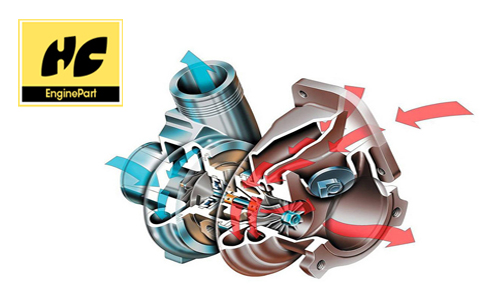Three types of turbocharging systems
2020-05-08

1. Exhaust gas turbocharging system
The exhaust gas turbocharging system uses the power of the engine exhaust to boost the intake air and improve the engine charging efficiency. The turbocharger system compresses the intake air, increases the gas density, increases the amount of air that enters the combustion chamber at each intake stroke, and increases the amount of fuel supplied to achieve the purpose of improving combustion efficiency and fuel economy.
The turbocharger is mainly composed of a volute, turbine, compressor blades, and boost pressure regulator. The inlet of the volute is connected to the exhaust port of the engine, and the outlet is connected to the exhaust manifold. The inlet of the compressor is connected to the intake pipe behind the air filter, and the outlet is connected to the intake manifold or the intake intercooler. The exhaust gas discharged by the engine drives the turbine to rotate, driving the compressor blades to rotate, pressurizing the intake air and pressing it into the engine.
2. Mechanical booster system
The supercharger uses a belt to connect with the engine crankshaft pulley. The engine speed is used to drive the internal blades of the supercharger to generate supercharged air and send it into the engine intake manifold.
The supercharger is connected to or disconnected from the engine crankshaft through an electromagnetic clutch. Some engines are also equipped with a charge air cooler. The pressurized air flows through the charge cooler and is sucked into the cylinder after cooling.
3. Dual booster system
The dual supercharging system refers to a supercharging system that combines mechanical supercharging and turbocharging. The purpose is to better solve the respective shortcomings of the two technologies, and at the same time solve the problems of low-speed torque and high-speed power output.